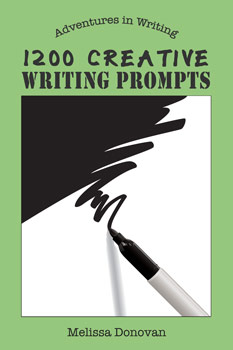

We let the author decide what it is and let readers decide how to receive it. Not creative nonfiction, fiction, poetry. The funny thing about all my defining and listing is that I edit a journal called Waterwheel Review, and we don’t label the pieces we publish by genre. Like a peony on the verge of blooming, a small wonder, or flash, contains a showstopper inside a bud no bigger than a marble.

If a rule is broken, it’s intentional and meaningful.įor very brief pieces, I add a sixth trait: compressed. Correct: Rules of grammar, spelling, and punctuation are followed.

There’s evident commitment to telling a true story with craft and connecting in an honest, intimate way with readers. The writer has taken care to say things in new ways. Original: The voice is distinct and reveals identity and personality.Nothing seems like a diversion too far afield. Everything hangs together (like a well-organized closet). Coherent: Summaries, scenes, and details support the core.For example, for a particular story, I might choose the subgenre of personal essay (form), use a symmetrical pattern to swing back and forth between the personal and the universal (shape), and decide where to start, where to end, and how much of each side to include (structure). Organized: The piece has a form, shape/controlling design, and structure.The only questions readers ask are the ones the writer wants them to ask. Readers don’t re-read sentences or paragraphs searching for context. If an essay is clear, readers are not lost in time and space. (Recall being asked “What is the main idea?” on reading comprehension tests.) The piece reads fluently. It has a strong core, or purpose/central idea. Clear: The writing is clear, both at the macro level and sentence level.Good creative nonfiction writing is COCOC: clear, organized, coherent, original, and correct. The list is a touchstone for my students when they ask for and provide specific feedback and as a means to closely evaluate their prose. (These resources are included below this post.)Īdult writers are my students now, and over the past few years, I’ve combined and condensed the lists into one that I find easy to teach, apply, and remember. Teaching graduate school, I offered a four-criteria scale on creative works. To evaluate my undergraduate students’ essays, I used the campus writing center’s 10-characteristic rubric. When I taught elementary school, my colleagues and I assessed our students’ work with “6 Traits” and, later, “6 + 1 Traits” from Education Northwest. Before I share the list, a caveat: search “traits of good writing” and you’ll find pages for days. The resource I use most often, in both teaching and writing, is my list of what makes creative nonfiction writing good. I like to place essays in conversation with each other, to read similarly styled pieces in one sitting, to learn more about the whole by reading lots of the parts. I like to know a type of writing when I see it. I’ve catalogued my library by content and again by type (traditional memoir, experimental memoir, essay collections, etc.). I’ve developed a list of characteristics for each subgenre and a list of characteristics specific to brief pieces.

Using Sue William Silverman’s definitions in “The Meandering River,” I’ve built a spreadsheet that arranges the subgenres by focus and length. To better understand the contours and corners of creative nonfiction, I organize the genre. But … well, I like my bars and shelves, my containers. When I think of creative nonfiction, I think of the genre as a wide-open box, one that is ever expanding to include more shapes and inventions. My tops are sorted by color, then by pattern. As a highly organized person, I hang my dresses from sleeveless to long sleeve, knee-length to ankle. I love my closets with their bars and shelves, dedicated boxes and bins. The box is like a closet without bars and shelves. In and out go folders, books, pencils, markers, stickers, rulers, paper clips, paper masks, notes from home, notes for home, open hand sanitizer bottles, used tissues, animal crackers, empty juice boxes, pepperoni, Cheetos. In practice, the boxes are a bit of a mess. One of the many measures my sons’ elementary school has in place for pandemic-time in-person learning is file boxes: an open box under each chair to hold all personal materials, so no one shares crayons or germs.


 0 kommentar(er)
0 kommentar(er)
